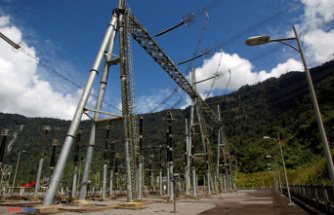Particulate matter shortens the lives of millions of people worldwide. A new study creates a global picture of exposure to harmful particles. Regional differences are significant. But at the end of the day, more than 99 percent of people breathe polluted air.
Particulate matter is a real killer. An estimated seven million people worldwide die every year because of the tiny particles in the air. In Germany alone there were almost 29,000 in 2020. City dwellers in particular are exposed to concentrations above the strict guidelines set by the World Health Organization (WHO). A new study now concludes that only 0.001 percent of people worldwide breathe air that is completely harmless.
The research team led by Yuming Guo from Monash University Melbourne in Australia also found that only 0.18 percent of the global land area is spared from excessive fine dust levels. Particulate matter is defined as particles with a diameter of less than 10 micrometers. The smaller particles, less than 2.5 microns in size, are considered particularly harmful because they can penetrate deeper into the airways. They are referred to as PM2.5 (PM is the abbreviation for "particulate matter"). The WHO considers an annual average pollution of more than 5 micrograms per cubic meter to be of concern.
According to the WHO, people should not be exposed to a concentration of 15 micrograms of fine dust for more than three to four days at a time - but according to the study, which was published in the journal "The Lancet Planetary Health", this is not the case in many places. Despite a slight decrease in air pollution in recent decades, the global average was above 70 percent of the days. The average concentration of particulate matter worldwide was 32.8 micrograms per cubic metre.
The research team used conventional methods for measuring air quality, satellite data and machine learning for their modelling. The researchers also found out that the development is very different globally: The daily fine dust values in Europe and North America have fallen in the two decades up to 2019, even if they are still in the harmful range. Air pollution actually increased in South Asia, Australia, New Zealand, Latin America and the Caribbean, albeit from very different levels.
The highest average concentration of PM2.5 fine dust was determined between 2000 and 2019 for the East Asia region, where it was 50 micrograms per cubic meter. South Asia (37.2 micrograms) and North Africa (30.1 micrograms) were also most heavily contaminated with particulate matter. In contrast, Australia and New Zealand (8.5) and other regions in Oceania (12.6) and South America (15.6) had the lowest annual PM2.5 concentrations in the world.
According to lead author Guo, the PM2.5 concentrations of concern also show different seasonal patterns: "These included northeastern China and northern India during the winter months of December, January and February, while eastern areas of North America experienced high PM2 during the summer months of June, July and August "Exhibited 5 values," the researcher said, according to a statement. Air pollution is high in August and September in South America and in June and September in sub-Saharan Africa.
The findings of the study correspond to a WHO report from last year: According to this, 99 percent of the world's population breathe air that exceeds the WHO limit values for particulate matter and nitrogen dioxide. In 2020, German researchers presented a study according to which air pollution reduced life expectancy worldwide much more than wars or infectious diseases.
The tiny PM2.5 granules can penetrate deep into the lungs and cause illnesses such as asthma, bronchitis and lung cancer with prolonged exposure. Cardiovascular and nervous diseases can also occur, and fine dust can also contain toxic heavy metals. Children, people with previously damaged airways and the elderly are particularly at risk
In Germany, 60 percent of fine dust emissions come from combustion processes, with households and small consumers as well as road traffic having the greatest emissions. Other relevant amounts of PM2.5 arise in industry. The emissions from trade and commerce as well as agriculture also have their share of fine dust. At least there is something positive to report: in Germany, particulate matter emissions have fallen by around 60 percent since 1995.












